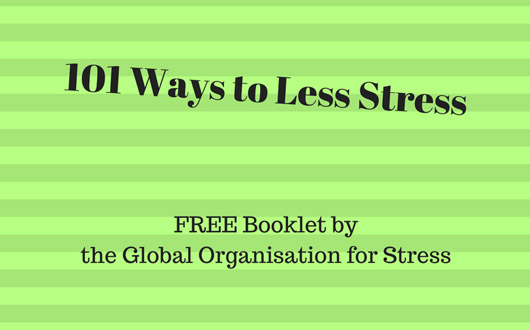What is stress? We’ve all heard of it but what does it mean? There’s a multitude of definitions but put simply, stress is your response to change – anything in your life that results in change causes you stress.
How you respond to this change, even if it is only imagined change, is what counts. You can either perceive the change as a positive or a negative process. So not all stress is bad – we can be stressed about good things too, like weddings, parties, anything!
Hans Selye, the pioneer of modern day stress research, identified four main types of stress: eustress – positive stress that motivates you into action and to meet challenges; understress – associated with boredom, lack of direction and ‘rustout’; overstress – going beyond your limits; and distress – your unresolved emotions and feelings.
Other causes of stress, called ‘stressors’, can come from:
- your mind – beliefs, values, thoughts and expectations;
- your body – illness, exercise, diet and life changes such as puberty and menopause;
- your relationships – with partner, family, friends and others;
- your job – working long hours, deadlines, job insecurity, the boss and work colleagues;
- your environment – noise, pollution, traffic and the weather; and
- critical incidents – accidents, diasters and other emergencies.
So what is the secret to lessening stress? The good news is that there are countless ways you can deal with the stress in your life! This Guide is full of ideas to get you started. Not every idea will appeal to you. So start with just a few ideas, highlight them, and maybe try one idea for a month before adding another and another.
Less Stress in Your Personal Life
Identify your stressors. Do you really know where your stress is coming from? For the next month, keep a stress journal. Whenever you feel stressed, write down the time, date, place, how you feel and how you respond. With your own personal ‘stress profile’, you’ll become aware of what really pushes your buttons!
Listen to your self-talk. What are you telling yourself about the stressors in your stress profile? Are they positive or negative thoughts? For example, do you say things like “I’ll never meet the deadline for this report”? How about saying “If I stay calm, focused and positive and take one step at a time, I’ll get there”. Doesn’t this sound much better?
Have you ever wondered why some people seem to thrive and others barely survive when faced with the same stressors? It’s because of the way they look at life – their beliefs, thoughts and positive self-talk. You’ve heard the saying “the mind is a powerful thing” – don’t doubt the power of your own mind! What your mind tells you to do, you will surely do. Your self-talk will determine your behavior and so will determine how you respond to stress.
Andrew Matthews in his book Being Happy identifies several common ‘patterns of behavior’. Here are a few. The drama pattern – my life is full of drama and whenever things look like going smoothly another drama appears; the broke pattern – money just always slips through my fingers; the indispensable pattern – without me nothing would be done around here; and the I always miss out pattern. Any of these sound familiar?
If you recognize any of these negative patterns, swap them for positive ones, such as: the I’m always happy pattern; the I’m always in the right place at the right time pattern; and the whatever I do is always fun and easy pattern. It’ll be the best trade-in you’ll ever make!
To read more go to this website and sign up for your free gift: http://www.gostress.com
Celine Healy
Stress Resolution Expert
Ph: 0408 646 887
info@stresstosuccess.com.au
www.stresstosuccess.com.au
To watch the RELEASE video please click on this link.


Recent Comments